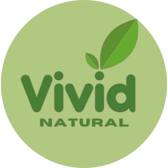History and Origin of Coir Products
Dive into the fascinating journey of coir, the fibrous husk of coconuts, in our latest blog post! Explore the rich history of coconut cultivation, tracing its roots back over 4,500 years in the Indo-Pacific region, and discover how traditional cultures have harnessed coir for a variety of essential applications—from ropes and mats to brushes and textiles.
Coir, the fibrous husk of coconuts, has been an essential material for countless generations, providing practical applications in various cultures around the world. Its journey from traditional uses to modern adaptations in cleaning products highlights not only its versatility but also its sustainability. This overview delves into the history of coconut cultivation and the use of coir in traditional cultures, followed by its evolution into a popular choice for eco-friendly cleaning solutions.
Brief History of Coconut Cultivation
Coconuts (Cocos nucifera) have a rich history that dates back over 4,500 years. They are believed to have originated in the Indo-Pacific region, with archaeological evidence suggesting their cultivation began in Southeast Asia. The coconut palm is often referred to as the "tree of life" due to its myriad uses; almost every part of the tree can be utilized for food, shelter, and various materials.
Traditional Uses of Coconuts
In coastal communities, coconuts served as a staple food source, providing water and nutrition. The meat of the coconut can be eaten fresh, dried, or processed into oil, while the water is a refreshing drink. The hard shell was often used as a bowl or tool, and the leaves were woven into mats, baskets, and roofs.
Coir in Traditional Cultures
The fibrous husk of the coconut, known as coir, has been an essential resource in traditional cultures. Coir is extracted from the outer shell of the coconut, which protects the seed. Traditionally, coir has been used for:
Ropes and Mats: In regions like India and Sri Lanka, coir has been crafted into durable ropes and mats. The strength and water resistance of coir make it ideal for use in agriculture, fishing, and everyday household items.
Brushes and Brooms: Coir’s rough texture is excellent for making brushes and brooms. These tools have been widely used for sweeping and scrubbing due to their effectiveness in cleaning.
Agricultural Uses: Coir is used in farming as a natural mulch and soil conditioner. It helps retain moisture, improves soil structure, and prevents erosion, making it valuable for sustainable agriculture.
Textiles and Crafts: In some cultures, coir has been woven into textiles and decorative items. Its natural look and feel have made it a sought-after material for traditional crafts.
Adaptation of Coir for Modern Cleaning Products
With growing awareness of environmental issues, there has been a notable shift towards sustainable products in recent years. This has opened the door for coir to find a new place in modern cleaning solutions.
Why Coir?
Coir’s natural properties make it an excellent choice for cleaning products:
Biodegradable: Unlike synthetic materials, coir is completely biodegradable, meaning it can decompose without harming the environment.
Durability: Coir is strong and resistant to wear, making it ideal for use in scrubbers and brushes.
Non-Toxic: Coir contains no harmful chemicals, making it safe for use around food and in homes with children and pets.
Water-Resistant: Coir’s natural water resistance prevents mold and mildew, enhancing its longevity in cleaning applications.
Modern Applications
Today, coir is used in various cleaning products, showcasing its adaptability and effectiveness. Some popular applications include:
Coir Scrubber Pads: These pads are becoming increasingly popular in kitchens and bathrooms. They are effective for scrubbing pots, pans, and countertops without scratching surfaces. Their natural abrasiveness helps remove tough stains and grime.
Sponges and Brushes: Coir is often used in sponges and brushes for household cleaning. These products provide a natural alternative to synthetic sponges, which often contain plastics and can contribute to environmental pollution.
Floor Cleaners: Coir fibers are sometimes incorporated into cleaning pads for mops and brooms. Their durability allows for effective cleaning on various surfaces, including hardwood and tile.
Garden and Outdoor Cleaning Products: Coir is also finding its way into outdoor cleaning products, such as brushes for cleaning patios and decks. Its natural resistance to water and decay makes it suitable for outdoor use.
Eco-Friendly Cleaning Trends
The adaptation of coir in cleaning products aligns with the broader trend of sustainability in consumer choices. As people become more environmentally conscious, there is a growing demand for products made from natural, renewable materials. Coir fits this demand perfectly.
Market Response and Consumer Awareness
Many brands are now recognizing the benefits of coir and incorporating it into their product lines. Consumers are increasingly seeking eco-friendly options that reduce plastic waste and are gentle on the planet. The positive response to coir-based products indicates a shift in consumer behavior toward sustainable living.
Challenges and Future Directions
Despite its many advantages, the adoption of coir in cleaning products does face challenges. For example, educating consumers about the benefits of coir over synthetic alternatives is crucial for market growth. Additionally, ensuring a consistent supply of high-quality coir remains essential for manufacturers.
As awareness of environmental issues continues to rise, the future for coir in cleaning products looks promising. Innovations in product design and sustainable practices will likely enhance its appeal in the marketplace.
Conclusion
Coir has a long and rich history, rooted in the cultivation of coconuts and the traditional practices of various cultures. Its journey from a versatile natural material to a key player in modern cleaning solutions reflects a growing commitment to sustainability. As consumers increasingly seek eco-friendly alternatives, coir products are poised to thrive in the market, proving that age-old materials can meet contemporary needs. The resurgence of coir in cleaning products not only celebrates its historical significance but also paves the way for a more sustainable future.




